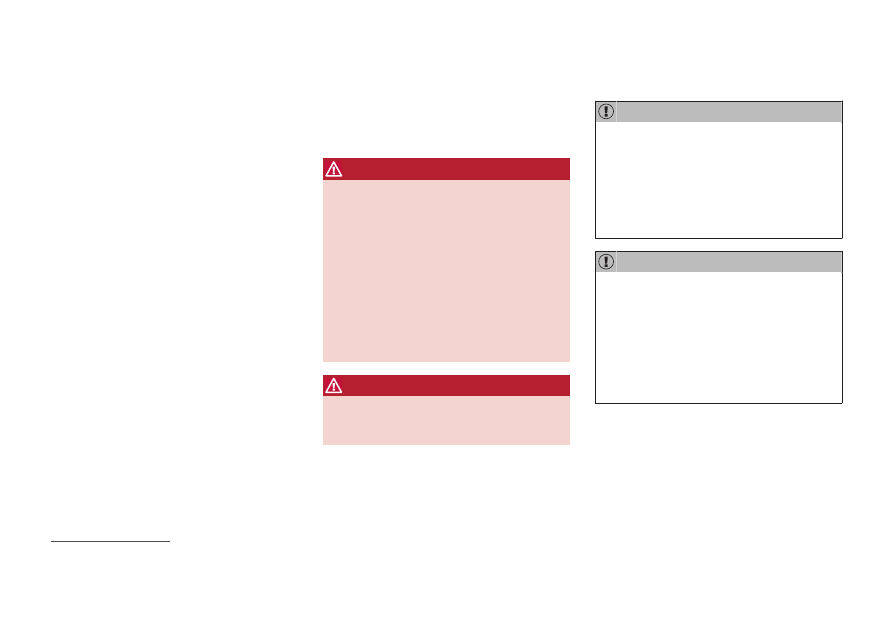Volvo V60 Twin Engine (2018 year). Instruction - part 18

||
STARTING AND DRIVING
302
Example 2
If the car is connected to a 230 VAC/10 A
socket and the control unit is set at 10 A, then
the car will draw 10 A from the 230 VAC mains
power circuit. If additional consumers are con-
nected to the same socket (or another socket in
the same fuse circuit) then there is a risk that the
fuse for the socket/fuse socket will be overloa-
ded and triggered, at which point battery charg-
ing is stopped.
In which case, reset the fuse for the socket/fuse
circuit and select a lower charging current on the
control unit - or disconnect other consumers
from the socket.
Example 3
If the car is connected to a 230 VAC/10 A
socket and the control unit is set at 6 A, then the
car will only draw 6 A from the 230 VAC mains
power circuit. Battery charging will of course take
longer, but then additional consumers can be
connected at the same time to the same socket
(or fuse circuit) as long as the total load does not
exceed the capacity of the fuse circuit.
Related information
•
Range for electric operation (p. 293)
Charging the hybrid battery -
preparations
Before recharging the car's hybrid battery can
be started (p. 308) a number of preparations
need to be made.
WARNING
•
Charging the hybrid battery must only
take place from approved grounded 230
VAC sockets.
•
The control unit's ground fault breaker
protects the car, but there may still be a
risk of overloading the 230 VAC mains
power circuit.
•
Avoid visible worn or damaged mains
sockets since they may lead to fire dam-
age and/or personal injury if used.
•
Never use an extension cable.
WARNING
The hybrid battery must only be replaced by a
workshop - an authorised Volvo workshop is
recommended.
Before charging
•
The control unit should not be flooded or
immersed in water.
•
Avoid exposing the control unit and its
plug to direct sunlight. In such cases, the
overheating protection in the plug is at
risk of reducing or interrupting the charg-
ing of the hybrid battery.
•
Check that the 230 VAC socket has ade-
quate power supply for charging electric
vehicles - in the event of uncertainty the
socket must be checked by a qualified
professional.
•
If the socket has unknown current inten-
sity - use the lowest level on the control
unit.
On the charging cable's control unit (p. 303)
select the required charging current (p. 301)
6-16 A
15
. On delivery, the lowest possible charg-
ing current is preset.
15
Maximum charging current may vary depending on market.